Search titles
Displaying results 51 to 60 of 558.
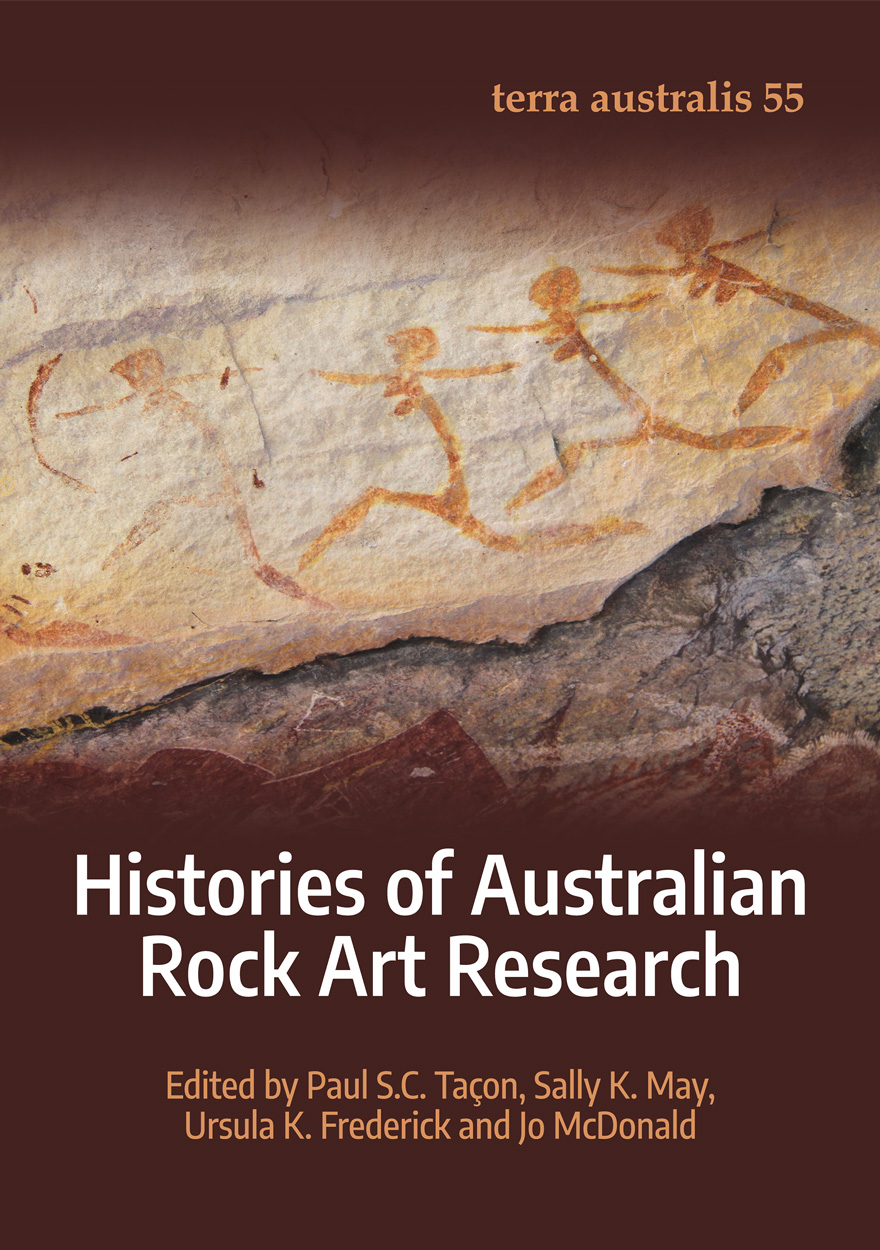
Histories of Australian Rock Art Research »
Publication date: September 2022
Australia has one of the largest inventories of rock art in the world with pictographs and petroglyphs found almost anywhere that has suitable rock surfaces – in rock shelters and caves, on boulders and rock platforms. First Nations people have been marking these places with figurative imagery, abstract designs, stencils and prints for tens of thousands of years, often engaging with earlier rock markings. The art reflects and expresses changing experiences within landscapes over time, spirituality, history, law and lore, as well as relationships between individuals and groups of people, plants, animals, land and Ancestral Beings that are said to have created the world, including some rock art. Since the late 1700s, people arriving in Australia have been fascinated with the rock art they encountered, with detailed studies commencing in the late 1800s. Through the 1900s an impressive body of research on Australian rock art was undertaken, with dedicated academic study using archaeological methods employed since the late 1940s. Since then, Australian rock art has been researched from various perspectives, including that of Traditional Owners, custodians and other community members. Through the 1900s, there was also growing interest in Australian rock art from researchers across the globe, leading many to visit or migrate to Australia to undertake rock art research. In this volume, the varied histories of Australian rock art research from different parts of the country are explored not only in terms of key researchers, developments and changes over time, but also the crucial role of First Nations people themselves in investigations of this key component of their living heritage.

Rethinking Social Media and Extremism »
Edited by: Shirley Leitch, Paul Pickering
Publication date: June 2022
Terrorism, global pandemics, climate change, wars and all the major threats of our age have been targets of online extremism. The same social media occupying the heartland of our social world leaves us vulnerable to cybercrime, electoral fraud and the ‘fake news’ fuelling the rise of far-right violence and hate speech. In the face of widespread calls for action, governments struggle to reform legal and regulatory frameworks designed for an analogue age. And what of our rights as citizens? As politicians and lawyers run to catch up to the future as it disappears over the horizon, who guarantees our right to free speech, to free and fair elections, to play video games, to surf the Net, to believe ‘fake news’?
Rethinking Social Media and Extremism offers a broad range of perspectives on violent extremism online and how to stop it. As one major crisis follows another and a global pandemic accelerates our turn to digital technologies, attending to the issues raised in this book becomes ever more urgent.
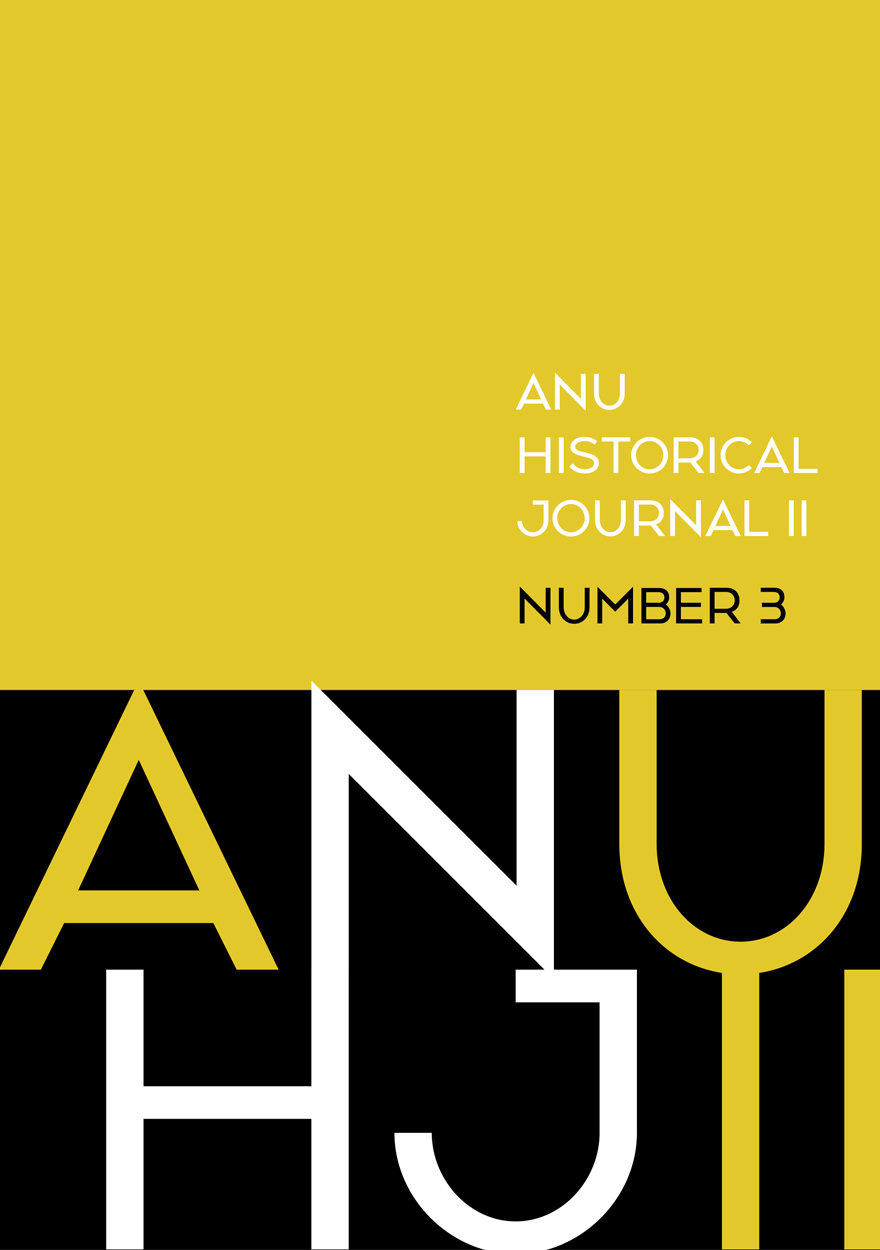
ANU Historical Journal II: Number 3 »
Publication date: June 2022
This issue of the ANU Historical Journal II brings together articles, reviews, lectures and artwork by historians from across Australia. It encompasses a wide range of subjects—local and foreign, modern and medieval—including Queensland politics in the 1960s and 1970s, the children's fiction of Victorian historian Margaret Kiddle, the moral lessons of Robin Hood tales, and the lives of Soviet ‘displaced persons’ in post-war Germany. The issue also exhibits a series of portraits of Australia's first eight prime ministers, as well as the short memoir of an ANU alumnus' experiences under the tutelage of Manning Clark. Finally, our reviewers discuss themes of colonialism, climate and transnational lives in recent published histories.
Download for free
Not available for purchase
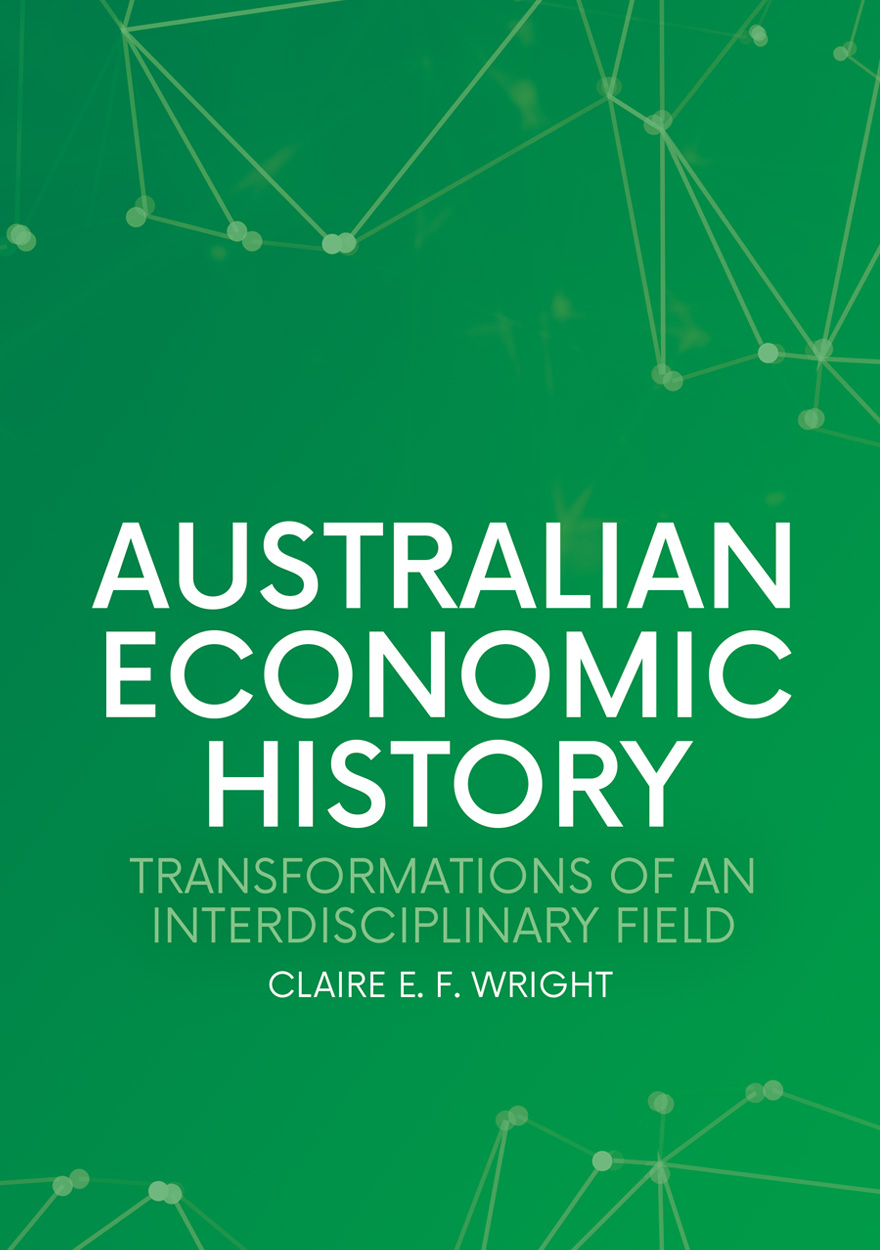
Australian Economic History »
Transformations of an Interdisciplinary Field
Authored by: Claire E. F. Wright
Publication date: June 2022
In a time of pandemics, war and climate change, fostering knowledge that transcends disciplinary boundaries is more important than ever. Economic history is one of the world’s oldest interdisciplinary fields, with its prosperity dependent on connection and relevance to disciplinary behemoths economics and history. Australian Economic History is the first history of an interdisciplinary field in Australia, and the first to set the field’s progress within the structures of Australian universities. It highlights the lived experience of doing interdisciplinary research, and how scholars have navigated the opportunities and challenges of this form of knowledge. These lessons are vital for those seeking to develop robust interdisciplinary conversations now and in the future.
‘This previously untold story of economic history in Australia exposes the centrality of economic thought and scholarship to Australian intellectual and political life. Deftly positioning economic history in an innovative institutional, place-based and person-focused narrative, Claire Wright entangles economics with the history of education to produce a tale of university interdisciplinarity, influence and impact. Written with vitality and bursting with both data and anecdote, this book makes an exceptional contribution to the intersecting fields of history, economics and higher education studies.’
– Hannah Forsyth, author of A History of the Modern Australian University.
‘Few readers would expect to find a classical tragedy in the story of an academic field. Yet that is what Claire Wright shows us in this study of Economic History, as it has been practiced in Australia. She traces the field from legendary beginnings to triumphant growth to organisational collapse - and renaissance on other terms. Carefully researched and vigorously written, this book raises questions about disciplines and interdisciplinary fields, universities and markets, and social bases of intellectual work, that are relevant to all fields today.’
– Raewyn Connell, author of The Good University
‘Australia proved a pioneer in the study of economic history, nurturing a discipline with innovative data and understanding of material trends. Yet by the 1990s economic history departments closed as senior scholars retired and the field was subsumed by conventional economics. In this absorbing study, Dr Claire Wright challenges the conventional account. She is tough-minded about financial and institutional pressures on the field, but cautiously optimistic about the future. It is a mistake, she argues, to see institutional representation as the benchmark of influence. Instead, the interdisciplinary nature of economic history has encouraged new research and teaching across the humanities and social sciences. With close attention to individual scholars and their university departments, and a deep sense of the trajectory of the field, Australian Economic History: Transformations of an Interdisciplinary Field is an original and important contribution to Australian intellectual history.’
– Glyn Davis, Distinguished Professor of Political Science in the Crawford School of Public Policy, The Australian National University
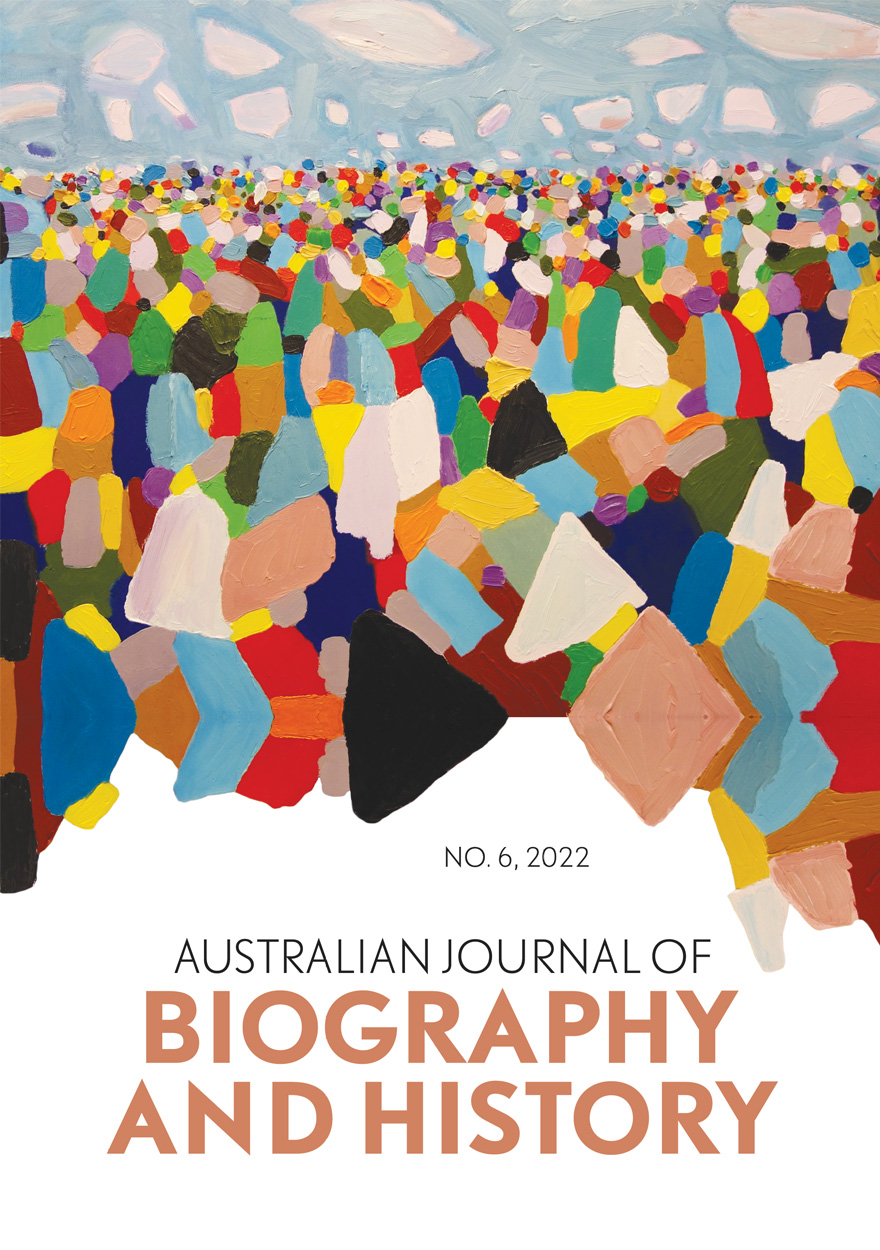
Australian Journal of Biography and History: No. 6, 2022 »
Publication date: May 2022
This special issue of Australian Journal of Biography and History, ‘Writing Slavery into Biography: Australian Legacies of British Slavery’, uses biographical approaches to explore how British slavery shaped the Australian colonies. It is the first stand-alone journal issue to feature an emerging body of historical work tracing the movement of people, investment and ideas from the Caribbean to Australia. Seven refereed articles and a roundtable discussion show how investment, imperial aspiration and migration turned towards Britain's ‘Second Empire’ in the aftermath of the Slavery Abolition Act 1833.
A substantive introduction reviews this emerging field of research and outlines preliminary findings. In her article, Jane Lydon examines the movement of two interconnected families (the Ridleys and Walcotts) from Demerara to Britain to the Swan River, where they acquired large land grants, participated in exploration and resource exploitation, and led the search for labour sources. Georgina Arnott investigates Western Australia’s first governor James Stirling’s biographical links to American and Caribbean slavery in light of ideas about race and labour that he promoted in Western Australia. And together Zoë Laidlaw and Georgina Arnott show how dictionaries of biography can be used alongside the Legacies of British Slavery database (hosted by University College London) to identify Australasian settlers with connections to slavery. They note the ways in which collective approaches to biography can reveal otherwise invisible patterns in global transfers of wealth, people and ideas.
With an eye to regionally specific processes of subjugation and enslavement in the northern Western Australian pearling and pastoralist industries, Malcolm Allbrook considers biography’s potential to illustrate the shadowy world of ‘blackbirding’ in relation to the perpetrators, the officials and the Aboriginal enslaved. Emma Christopher brings to life the colonial legacies of slavery in her account of Albert Messiah, Ishmael Williamson and John Henderson, sailors of African origin who worked on Pacific labour ships during the late nineteenth century, and whose lives illuminate the complex racial hierarchies of the Queensland frontier. Beth Robertson tells the layered story of her own great-great-grandfather, Edward Stirling, the illegitimate son of a British slave-owner and a woman of Ghanaian descent, whose material benefit from slavery helped him become a successful pastoralist and miner in South Australia, despite remaining the subject of racial prejudice.
Paul Arthur and Isabel Smith note the ‘biographical turn’ in museum exhibitions featuring stories of enslavement over the last two decades. They argue that this has enabled exhibitors to show stories of resistance, contingency and agency, albeit while navigating the ethical complexities of telling other people’s traumatic life stories. The feature section of this issue concludes with a roundtable discussion between Catherine Hall, Keith McClelland, Zoë Laidlaw, Jeremy Martens and Georgina Arnott on the topic of linking the legacies of British slave ownership to Australian colonisation. Here, Hall observes that biography, when used in combination with prosopography, reveals how the lives and family trajectories of slave owners were distinguished amongst imperial capitalists at large. This issue builds understanding of the precise ways that slavery shaped the Australian colonies.
Download for free
Not available for purchase
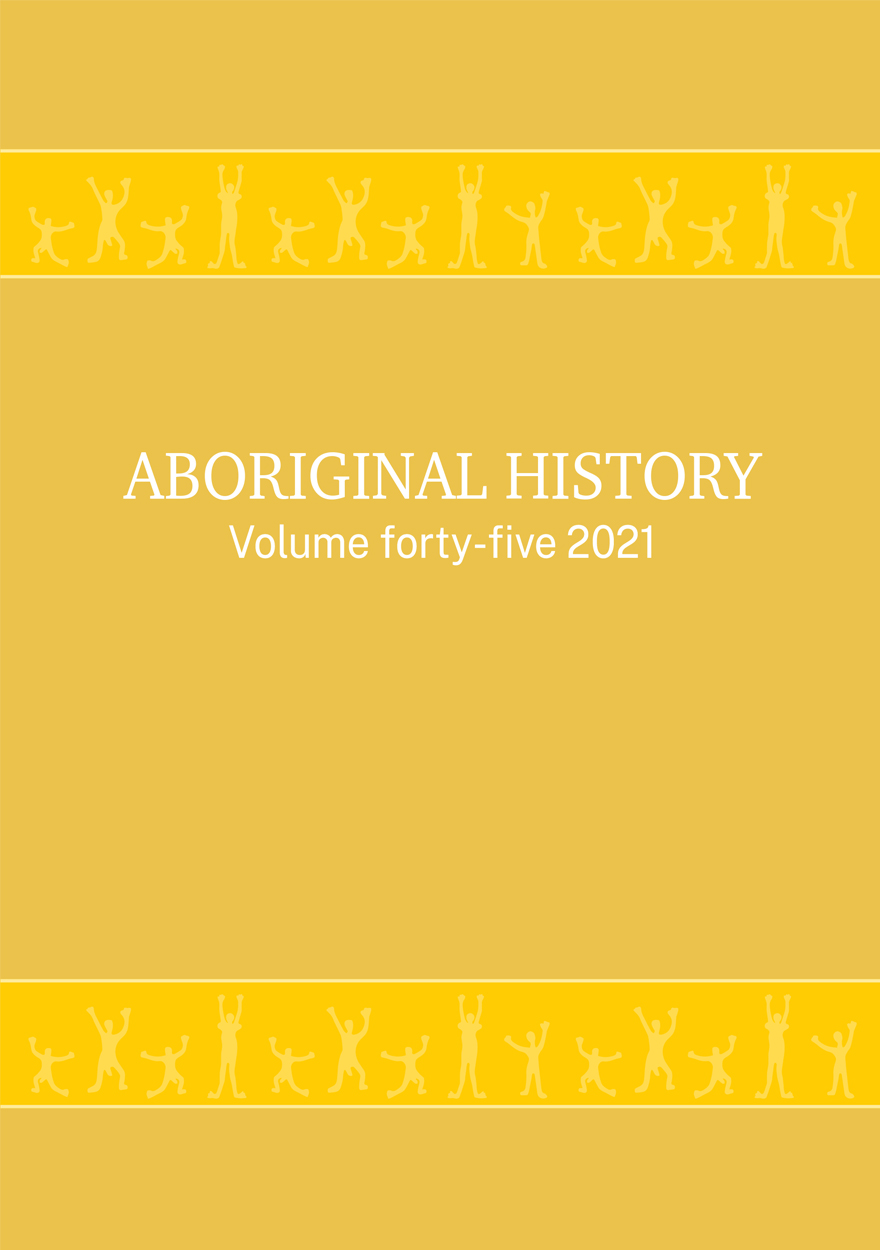
Aboriginal History Journal: Volume 45 »
Edited by: Crystal McKinnon, Ben Silverstein
Publication date: April 2022
This volume begins with Michael Aird, Joanna Sassoon and David Trigger’s meticulous research tracing the well-known but sometimes confused identity of Jackey Jackey of the Lower Logan River in south-east Queensland. Emma Cupitt describes the multivocality and intertextuality of Radio Redfern’s coverage of Aboriginal protests in Sydney as the 1988 Australian Bicentenary celebrations took place elsewhere in the city. Similarly approaching sources for their multiplicity, Matt Poll and Amanda Harris provide a reading of the ambassadorial work performed by assemblages of Yolngu bark paintings in diverse exhibition spaces after the Second World War.
Cara Cross historicises the production and use of mineral medicine—or lithotherapeutics—derived from Burning Mountain in Wonnarua Country, issuing a powerful call for the recognition of Indigenous innovation as cultural heritage. In a collaborative article, Fred Cahir, Ian Clark, Dan Tout, Benjamin Wilkie and Jidah Clark read colonial records against the grain to narrate a nineteenth-century history of Victorian Aboriginal relationships with fire, strengthening the case for the revitalisation of these fire management practices. And, based on extensive oral history work, Maria Panagopoulos presents Aboriginal narrations of the experience of moving—or being moved—from the Manatunga settlement on the outskirts of Robinvale into the town itself, on Tati Tati Country in the Mallee region of Victoria.
In addition to a range of book reviews, we are also pleased to include Greg Lehman’s review essay concerning Cassandra Pybus’s recent award-winning Truganini: Journey through the Apocalypse, which considers the implications of our relationships with history and how they help to think through practices of researching and writing Aboriginal history.
Download for free
Not available for purchase

Mobilising the Masses »
Populist Conservative Movements in Australia and New Zealand During the Great Depression
Authored by: Matthew Cunningham
Publication date: April 2022
The radical right has gained considerable ground in the twenty-first century. From Brexit to Bolsonaro and Tea Partiers to Trump, many of these diverse manifestations of right-wing populism share a desire to co‑opt or supplant the mainstream parties that have traditionally held sway over the centre right. It is now more important than ever to understand similar moments in Australian and New Zealand history.
This book concerns one such moment—the Great Depression—and the explosion of large, populist conservative groups that accompanied the crisis. These ‘citizens’ movements’, as they described themselves, sprang into being virtually overnight and amassed a combined membership in the hundreds of thousands. They staunchly opposed party politicians and political parties for their supposed inaction and infighting. Whether left or right, it did not matter. They wanted to use their vast numbers to pressure their governments into enacting proposals they believed were in the national interest: a smaller, more streamlined government where Members of Parliament were free to act according to their conscience rather than their party allegiance. At the same time, the movements prescribed antidotes for their nations’ economic ill‑health that were often radical and occasionally anti-democratic.
At the height of their power, they threatened to disrupt or outright replace the centre right political parties of the time—particularly in Australia. At a time when fascism and right-wing authoritarianism were on the march internationally, the future shape of conservative politics was at stake.

Archaeological Perspectives on Conflict and Warfare in Australia and the Pacific »
Edited by: Geoffrey Clark, Mirani Litster
Publication date: March 2022
When James Boswell famously lamented the irrationality of war in 1777, he noted the universality of conflict across history and across space – even reaching what he described as the gentle and benign southern ocean nations. This volume discusses archaeological evidence of conflict from those southern oceans, from Palau and Guam, to Australia, Vanuatu and Tonga, the Marquesas, Easter Island and New Zealand. The evidence for conflict and warfare encompasses defensive earthworks on Palau, fortifications on Tonga, and intricate pa sites in New Zealand. It reports evidence of reciprocal sacrifice to appease deities in several island nations, and skirmishes and smaller scale conflicts, including in Easter Island. This volume traces aspects of colonial-era conflict in Australia and frontier battles in Vanuatu, and discusses depictions of World War II materiel in the rock art of Arnhem Land. Among the causes and motives discussed in these papers are pressure on resources, the ebb and flow of significant climate events, and the significant association of conflict with culture contact. The volume, necessarily selective, eclectic and wide-ranging, includes an incisive introduction that situates the evidence persuasively in the broader scholarship addressing the history of human warfare.

Voluntary Assisted Dying »
Law? Health? Justice?
Edited by: Daniel J Fleming, David J Carter
Publication date: February 2022
Since the introduction of voluntary assisted dying in 2019, a ‘new moment’ in the governance of life and death has opened up within the Australian context. This new moment demands new questions be asked regarding the regime and its effects in this new era for law, health care and justice.
This collection brings together critical perspectives on voluntary assisted dying itself, and on various practices adjacent to it, including questions of state power, population ageing, the differential treatment of human and non-human animals at the time of death, the management of health care processes through silent ‘workarounds’, and the financialisation of death.
This book provides an overview of the first Australian regime, and then introduces these diverse critical views, broadening our engagement with euthanasia and voluntary assisted dying beyond the limited, but important, debates about law reform and its particular enactment in Australia.

Georges River Blues »
Swamps, Mangroves and Resident Action, 1945–1980
Authored by: Heather Goodall
Publication date: February 2022
The lower Georges River, on Dharawal and Dharug lands, was a place of fishing grounds, swimming holes and picnics in the early twentieth century. But this all changed after World War II, when rapidly expanding industry and increasing population fell heaviest on this river, polluting its waters and destroying its bush.
Local people campaigned to defend their river. They battled municipal councils, who were themselves struggling against an explosion of garbage as population and economy changed. In these blues (an Australian term for conflict), it was mangroves and swamps that became the focus of the fight. Mangroves were expanding because of increasing pollution and early climate change. Councils wanted to solve their garbage problems by bulldozing mangroves and bushland, dumping garbage and, eventually, building playing fields. So they attacked mangroves as useless swamps that harboured disease. Residents defended mangroves by mobilising ecological science to show that these plants nurtured immature fish and protected the river’s health.
These suburban resident action campaigns have been ignored by histories of the Australian environmental movement, which have instead focused on campaigns to save distant ‘wilderness’ or inner-city built environments. The Georges River environmental conflicts may have been less theatrical, but they were fought out just as bitterly. And local Georges River campaigners – men, women and often children – were just as tenacious. They struggled to ‘keep bushland in our suburbs’, laying the foundation for today’s widespread urban environmental consciousness.
Cover: Ruth Staples was a courageous Georges River campaigner who lived all her life around Lime Kiln Bay at Oatley West. She kept on fighting to regenerate the river until her death, aged 90, in 2020.



